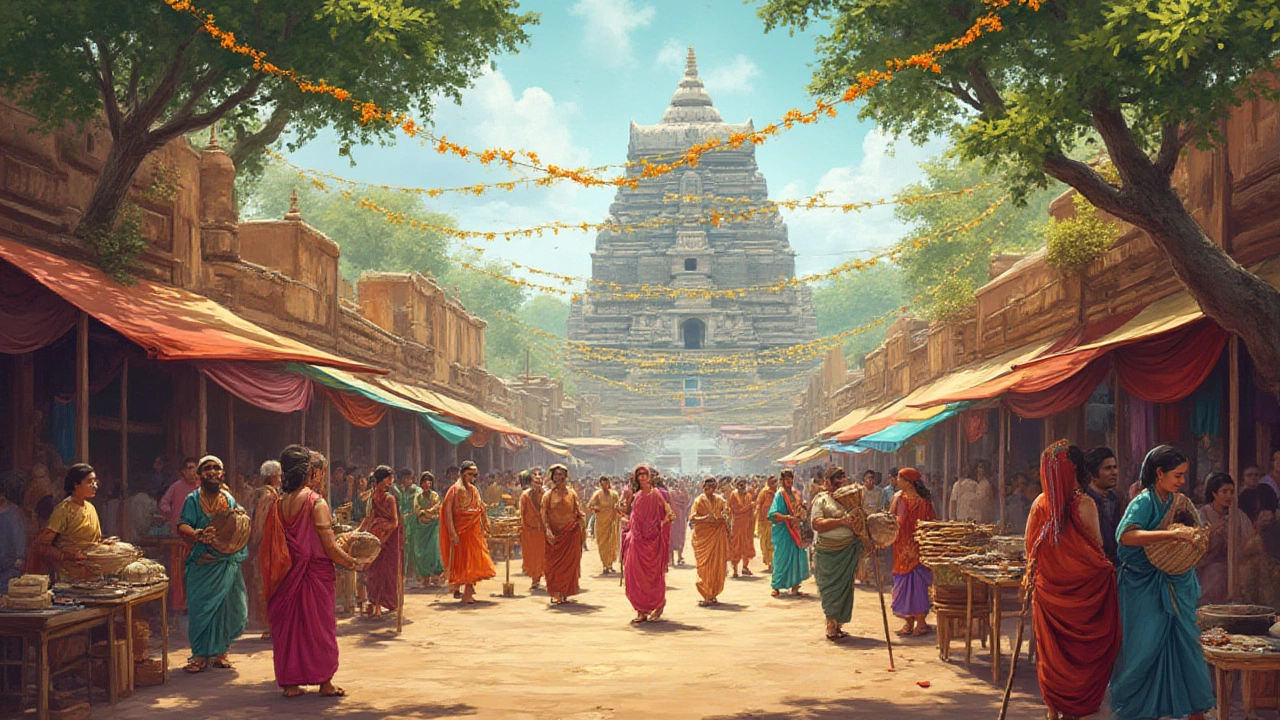
Top Examples of Cultural Tourism in India: Famous Experiences & Unique Traditions
Explore how cultural tourism in India brings you close to living heritage, colorful festivals, traditional crafts, ancient temples, and regional food adventures.
India’s calendar is packed with festivals that bring families together, light up streets, and showcase age‑old customs. Whether you’re planning a trip or just curious, knowing the basics helps you join the celebrations without feeling lost.
Diwali – the Festival of Lights: Celebrated in October‑November, Diwali marks the victory of light over darkness. Homes get lanterns, fireworks, and sweets. If you visit, bring a small gift like sweets or a decorative diya to share good wishes.
Holi – the Color Splash: This spring event (usually March) throws vibrant powders into the air. Join the fun by wearing white clothes you don’t mind staining. Keep a water bottle handy because the celebration often turns wet.
Pongal – South India’s Harvest Feast: Held in mid‑January, Pongal honors the sun and a good harvest. Expect rice dishes cooked in a pot, decorated cows, and folk dances. Visitors can offer a simple fruit or a flower to the cooked rice as a sign of respect.
Navratri & Durga Puja – Nine Nights of Dance and Devotion: Navratri runs for nine nights in September‑October, ending with Dussehra. In West Bengal, Durga Puja dominates the same period with elaborate idols and music. If you attend, follow the crowd’s rhythm – clap, dance, and enjoy the street food.
Onam – Kerala’s Grand Harvest Celebration: This 10‑day festival in August‑September features boat races, flower carpets (pookalam), and a massive feast called Sadya. Dress in a traditional mundu or a bright saree to blend in.
First, check the exact dates for the year you plan to go. Indian festivals follow the lunar calendar, so they shift annually. A quick online search or a local guide can give you the right timing.
Second, respect the customs. Remove shoes before entering a temple, avoid wearing shoes inside homes, and don’t touch holy objects unless invited. A smile and a polite "Namaste" go a long way.
Third, try the food. Each festival has signature dishes – sweet ladoos for Diwali, bhang‑infused drinks for Holi, and banana leaf meals for Onam. Street stalls are usually safe, but if you have a sensitive stomach, pick vendors with a line of locals.
Fourth, stay safe during crowds. Keep your valuables close, use a small backpack, and stay hydrated. Public transport gets crowded, so plan extra travel time.
Finally, capture the moments, but don’t forget to live them. Festivals are loud, bright, and messy – that’s the charm. Put the phone away for a while, join the dance, and enjoy the communal spirit.
From the glittering lights of Diwali to the playful chaos of Holi, India’s traditional festivals offer a window into the country’s soul. With a little preparation, you can experience them authentically and create memories that last a lifetime.

Explore how cultural tourism in India brings you close to living heritage, colorful festivals, traditional crafts, ancient temples, and regional food adventures.